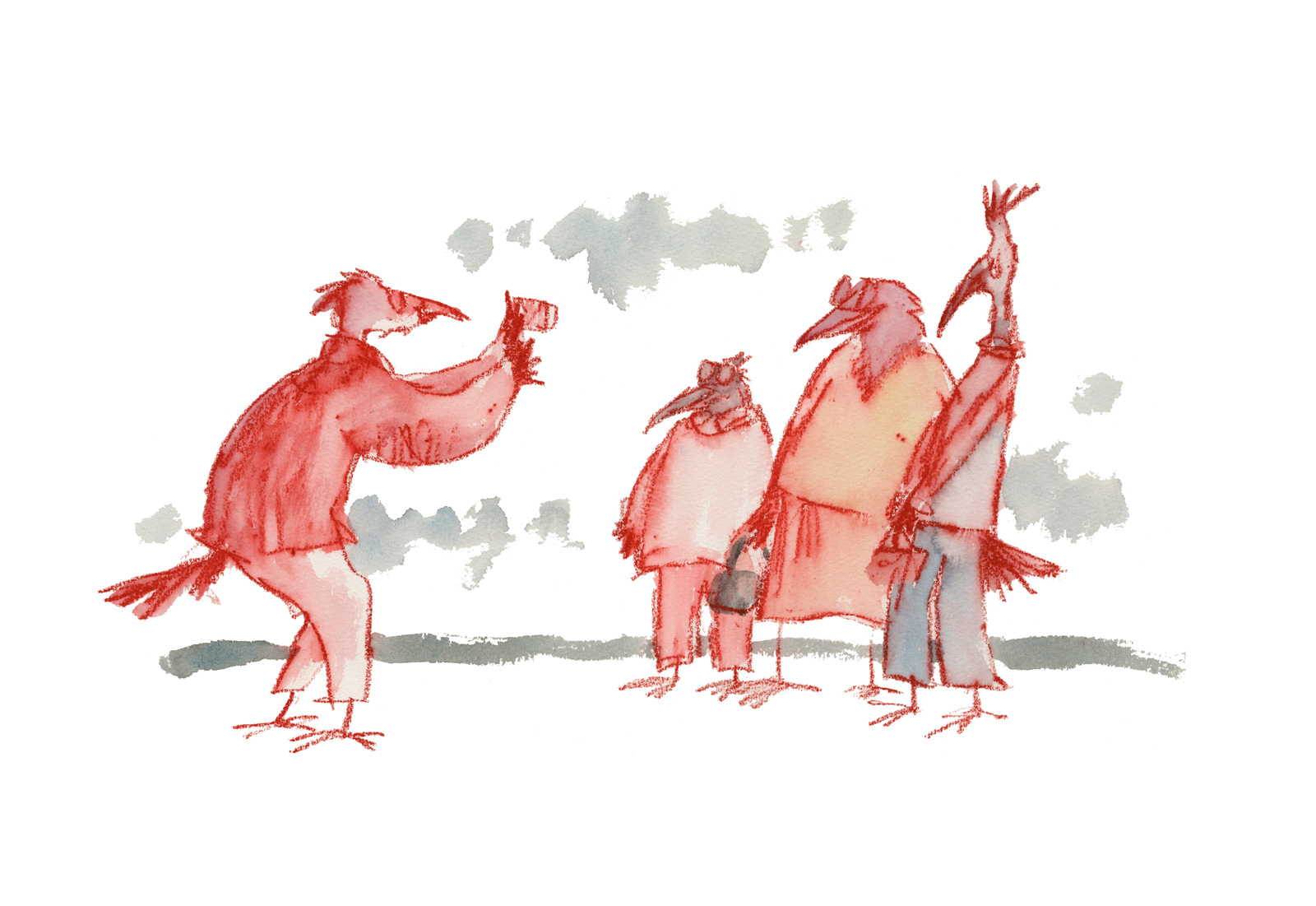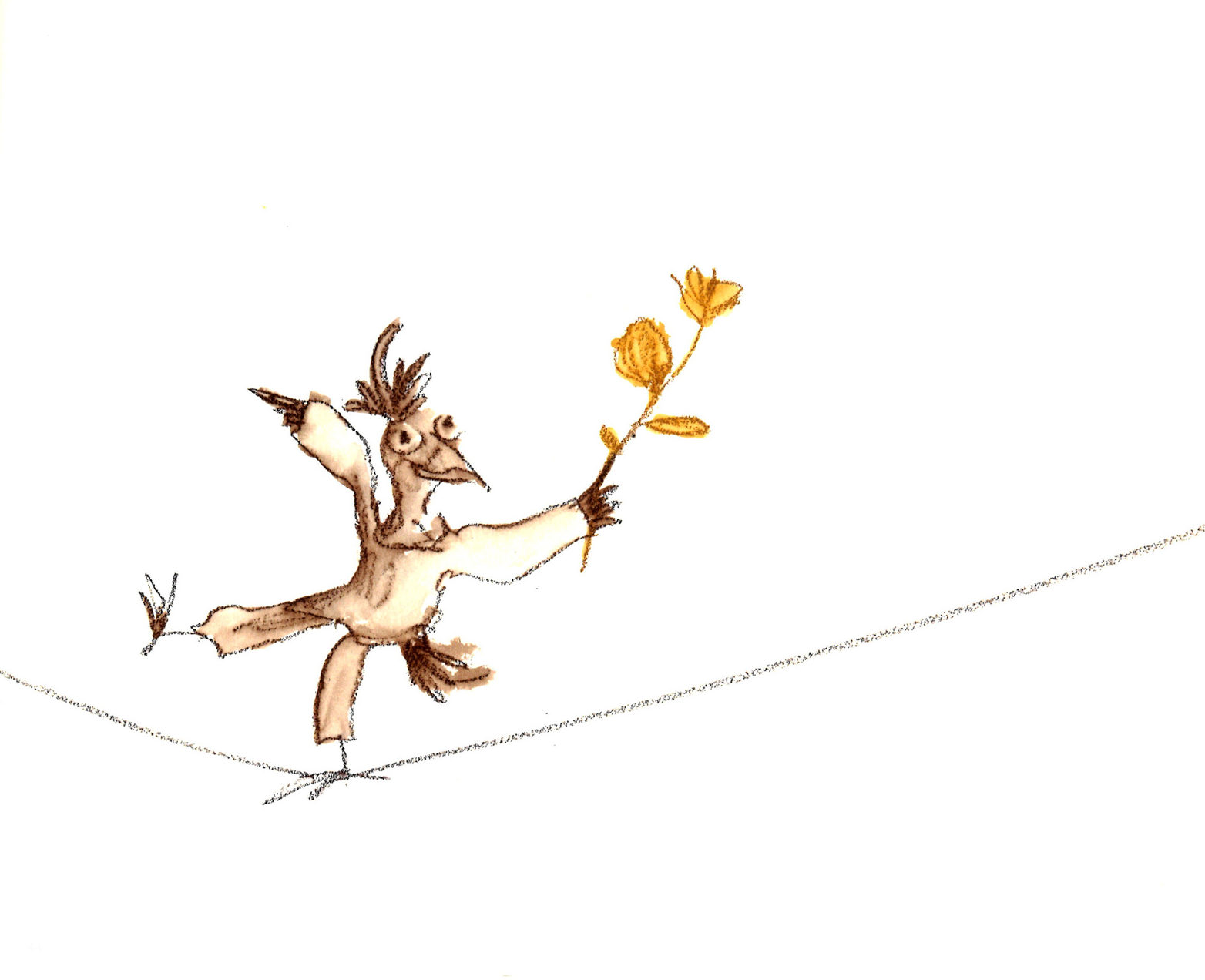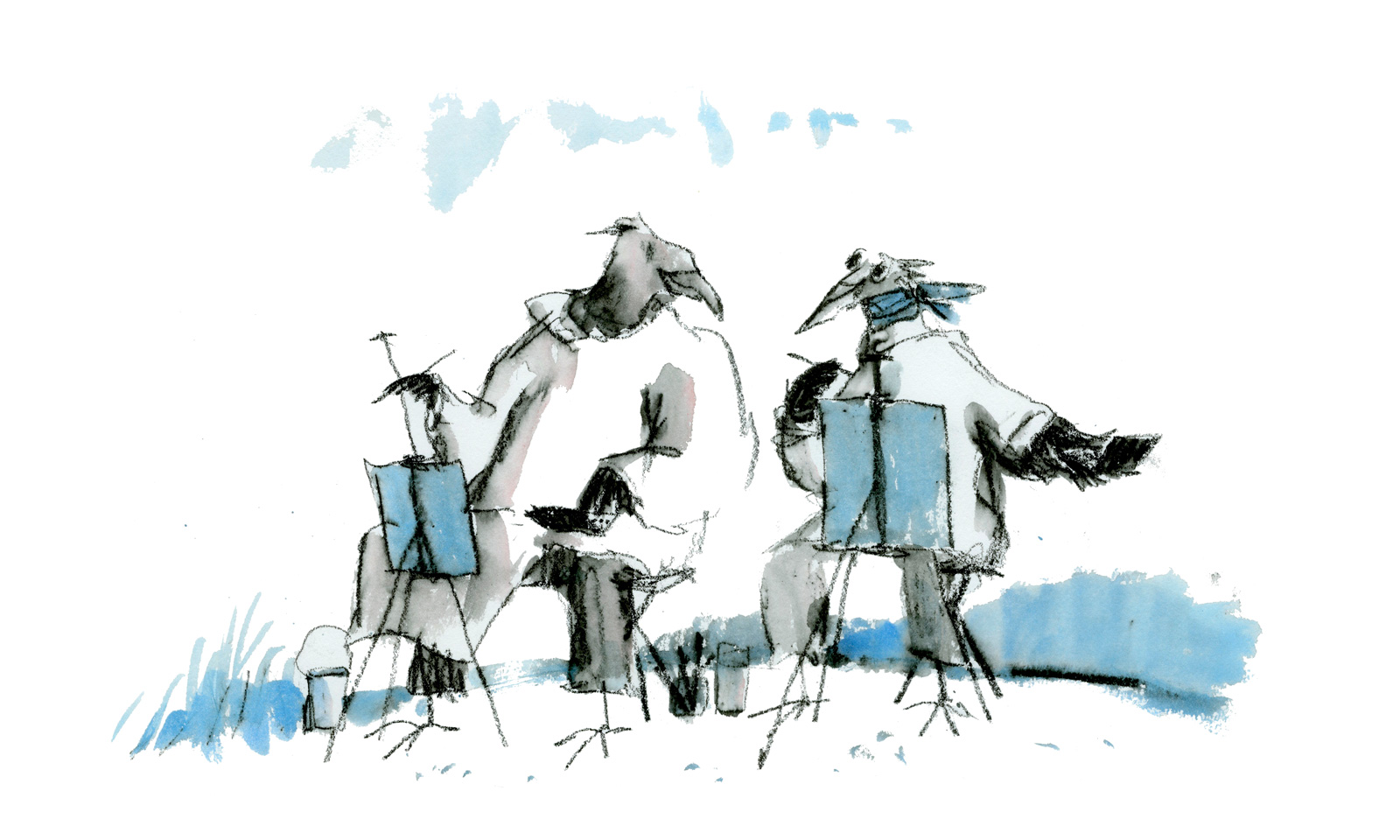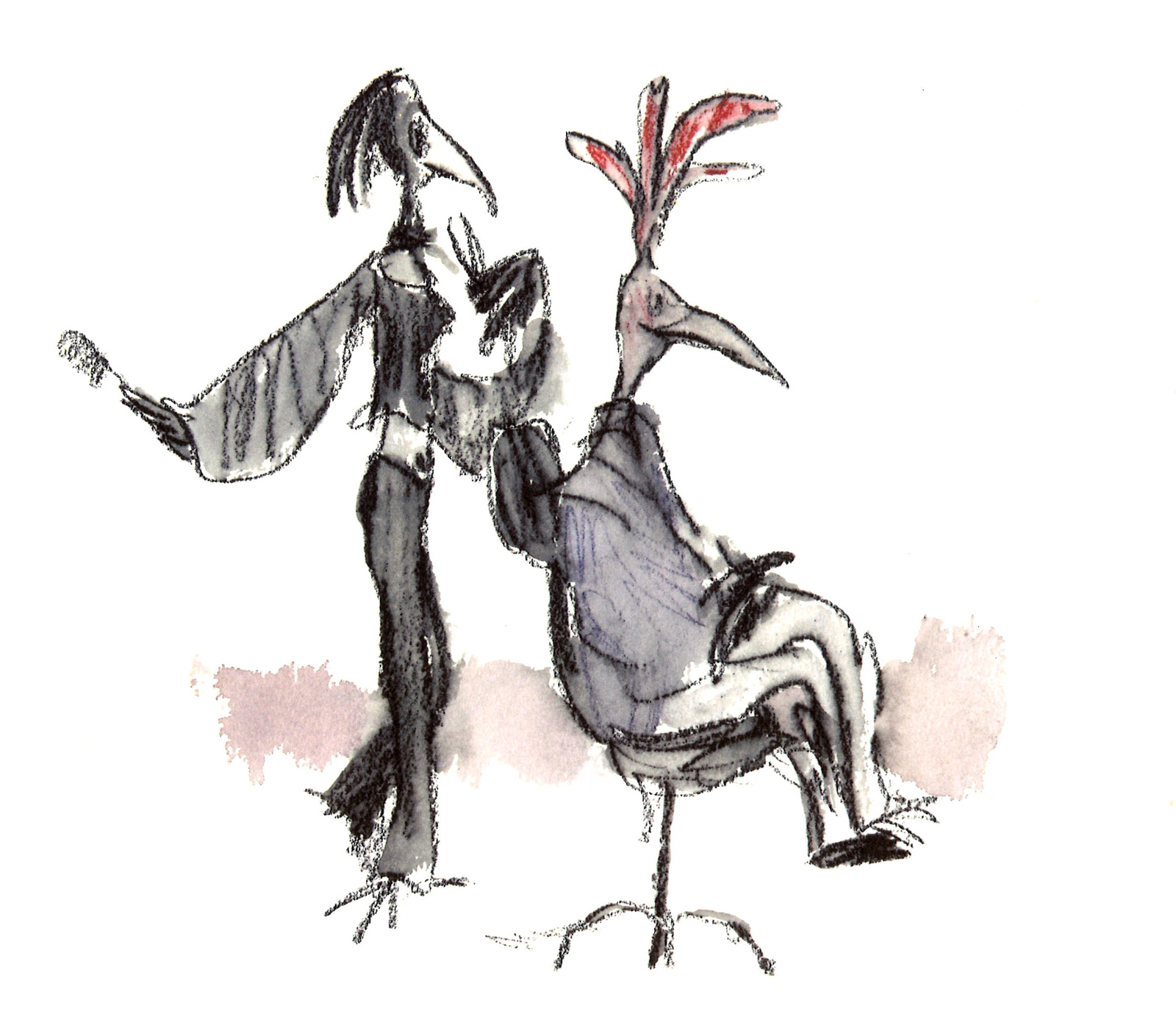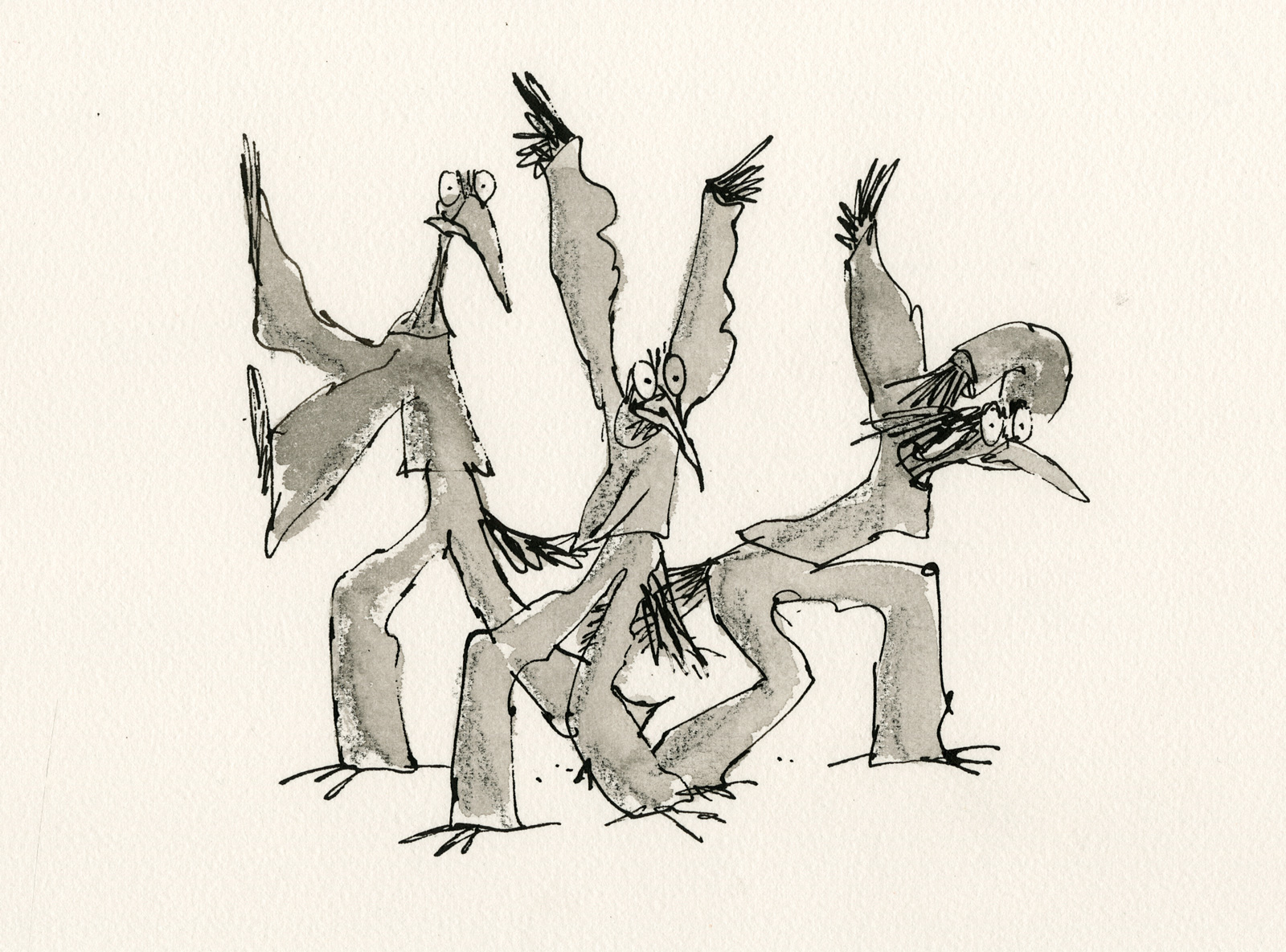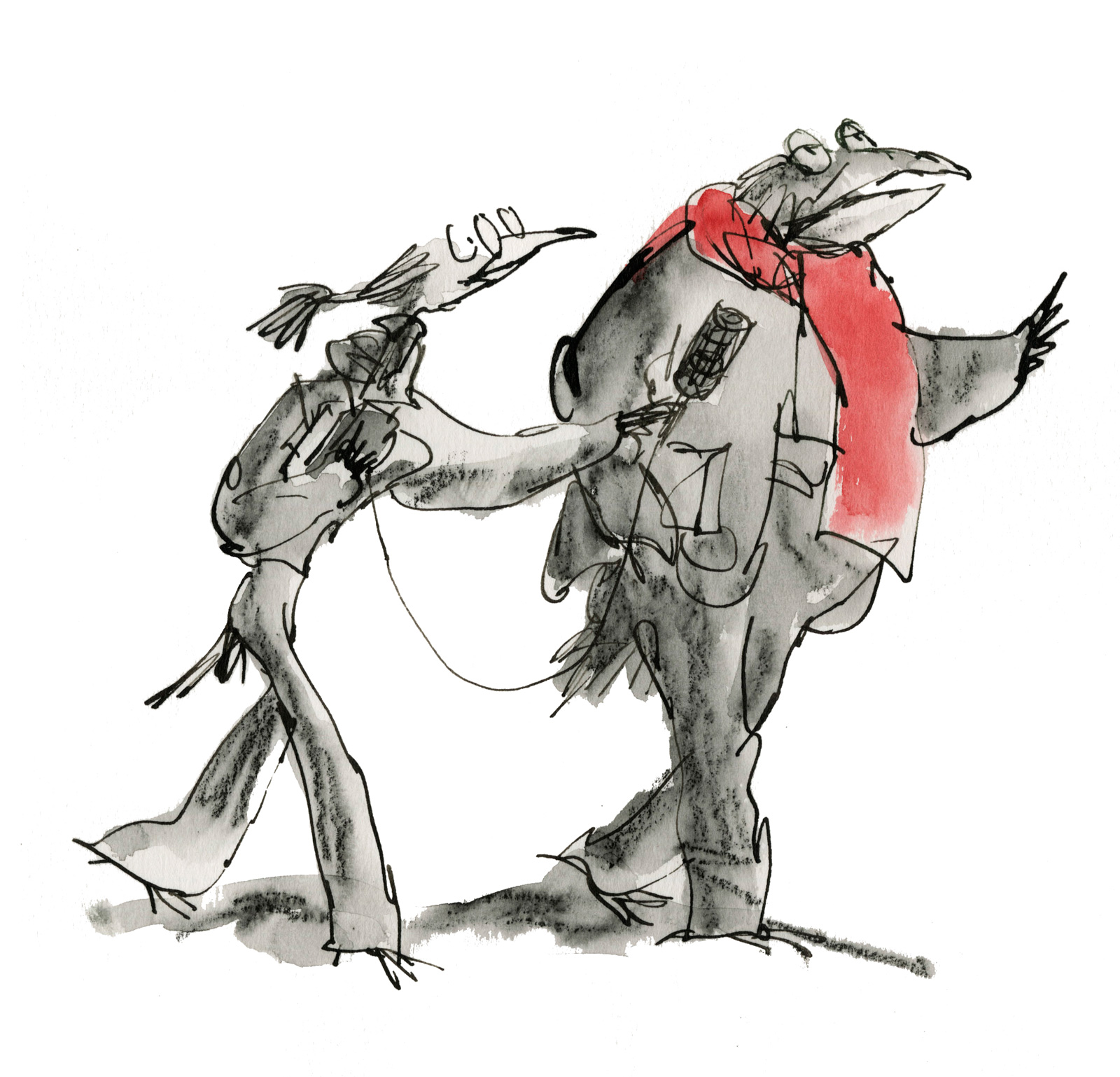It’s been a dark time in Britain, shadowed by the terrorist attacks and the terrible apartment block fire. Hard to write about having fun, yet getting on with ordinary life, even enjoying it, has become part of the mood of defiance. And for many people, the artist Quentin Blake sums up fun, delighting in the odd and the ordinary. His new “Quentin Blake: The Life of Birds,” drawn from the archive held by the House of Illustration in London, is a tiny exhibition, but one of pure, quirky joy. Blake is best known as an illustrator of children’s books, including most of Roald Dahl’s, but he is also the creator of vivid, funny, scratchy images that brighten the walls of schools and hospitals, challenging fear and stress. His work is always different yet immediately recognizable, with its elongated, arm-waving and leg-tangling figures, young and old, perching and jumping, singing and playing, causing chaos in their own ebullient way.
His people often lounge around in trees. They have an affinity with birds, as Blake himself noticed some time ago. “If I fossick deep enough in my plan chest drawers,” he writes, “I can come across a few old drawings of birds behaving rather like humans. Some of them wear robes, and perhaps might be retired barristers or writers. I am not quite sure when they developed into a separate race of beings, parallel to ourselves and pursuing all our activities.” From this recognition came his 2005 book The Life of Birds (translated into French with the neat title Nous les Oiseaux). Several of the drawings on show at the House of Illustration were made for this book, now sadly out of print, and here they join others, with birds—of no species known to naturalists—performing like actors “able to deal with all sorts of human situations.” They are sociable creatures, Blake’s birds, and in two images they gather at a cocktail party, wearing their robes like a flight of academics, patient listeners and pompous bores, eager questioners and shy resisters. One can almost hear the chatter.
Asked why the parallel with people seems so acute, Blake responds: “I say feebly that perhaps it’s because they have two legs like us, and I think that is probably true, though I think my real answer is ‘why not?’” Writers have, of course, used birds and animals to teach lessons about human behavior ever since Aesop, but he’s working in a definite tradition—intriguing because it stems from “scientific” natural history illustrators as much as from artists and cartoonists. Eighteenth-century naturalists, watching birds closely, often slipped into anthropomorphism, granting them human attitudes, attributes and desires. In June 1782, Gilbert White of Selborne described his brother pinning up scallop shells beneath the eaves, hoping that house martins might build there: within half an hour of fixing these “conveniences” the birds arrived “and expressing great complacency, began to build immediately.”
Thomas Bewick drew sublimely accurate woodcuts for his ground-breaking History of British Birds (1797–1804) but he still gave the birds “personalities”: the restless magpie, foolish hen, assertive robin, shy warbler. And if birds resembled people, the converse was also true: humans could be like birds. Edward Lear, acclaimed in his youth as one of the finest natural history artists in Britain, often showed people as birds in his nonsense books, like the old person of Nice, “whose associates were usually geese,” or the old man of El Hums, who lived upon nothing but crumbs. He drew himself too in avian guise, perching in a tree, swimming with the geese, bending to peck.
Blake, like Lear, is an amused observer who pretends that his art is nothing but nonsense, but whose judgements are both shrewd and tolerant, allowing room for the odd, the eccentric, the bizarre. In this exhibition one set of sketches pokes fun at the harmless vanities of the modern world—the over-enthusiastic greetings of old school friends, the solemn satisfaction of being measured for a suit, the embarrassed alarm when you see what the hairdresser has done. Others, casually poignant, set the bounce of youth against the frailty of age: a young bird, bright as a yellowhammer, frolics on a tightrope; an old one, bent and grey as a crow, totters and sweats. There is melancholy here too, evoked by background washes and shadows: unable to fly, the bird-humans take to their bikes, watching the mist rise on a river or riding into mountains at night, optimistically shining a flashlight.
Many of Blake’s illustrations over the years have shown people playing music, singing, and acting, in fact generally showing off, and the birds share this gift for performance. In the House of Illustration one wall is covered with the wallpaper that Blake designed to cover a fat pillar in the office of Sir Nicholas Kenyon, director of London’s Barbican Centre—the largest performing arts center in Europe. All the Barbican’s activities appear: men dance and drum, children read, sopranos shriek, conductors flail, a desperate Cordelia clasps the knees of a staring Lear. Every pose is perfect.
Advertisement
Oddly, the human traits that Blake illustrates seem clearer and sharper in these birds than in his drawings of people, perhaps because without the human features we see only the revealing shorthand of gesture, expression, and movement. In this respect my favorite group has to be the series of birds as readers and writers, drawn for Le Figaro Litteraire in 2012. (Blake spends half the year in France and is admired there as much as in Britain.) And who could not laugh at these authors! We see them smug with success, pursued by interviewers, smiling politely at signing queues and having their books literally devoured at a dinner. But alone the bird-writer suffers private agonies, panicking in front of the computer, searching goggle-eyed for the ever elusive mot juste!
This show nests happily in the House of Illustration, the UK’s only gallery devoted to this medium, which opened in July 2014. It was an early part of the extraordinary redevelopment behind London’s King’s Cross and St. Pancras stations, which I’ve watched with fascination and some dread over the years, as I arrive on the train up from Kent. Very slowly, sheds and slums, markets and dirty canal banks, warehouses and Victorian gas-holders are being transformed into a whole new neighborhood. Next door to the House of Illustration, Saint Martins School of Art has moved into an old granary that once stored Lincolnshire wheat for London bakers.
Today, in the sunny square outside, scores of children in swimsuits play in the fountains while families sit and watch. The towpath of the Regents Canal blossoms with elderflower and roses. The strips between high-rise buildings are green with shrubs and grass and running water. And as the students and businesses and cafes have moved in, so have the birds—not just the London pigeons and sparrows but geese with their goslings, blue tits and chaffinches, swallows and swifts and many more. It feels right that Blake’s Life of Birds should find a home here. And in his drawings, at least, there are no birds of prey.
“Quentin Blake: The Life of Birds” is at the House of Illustration through October 1.


